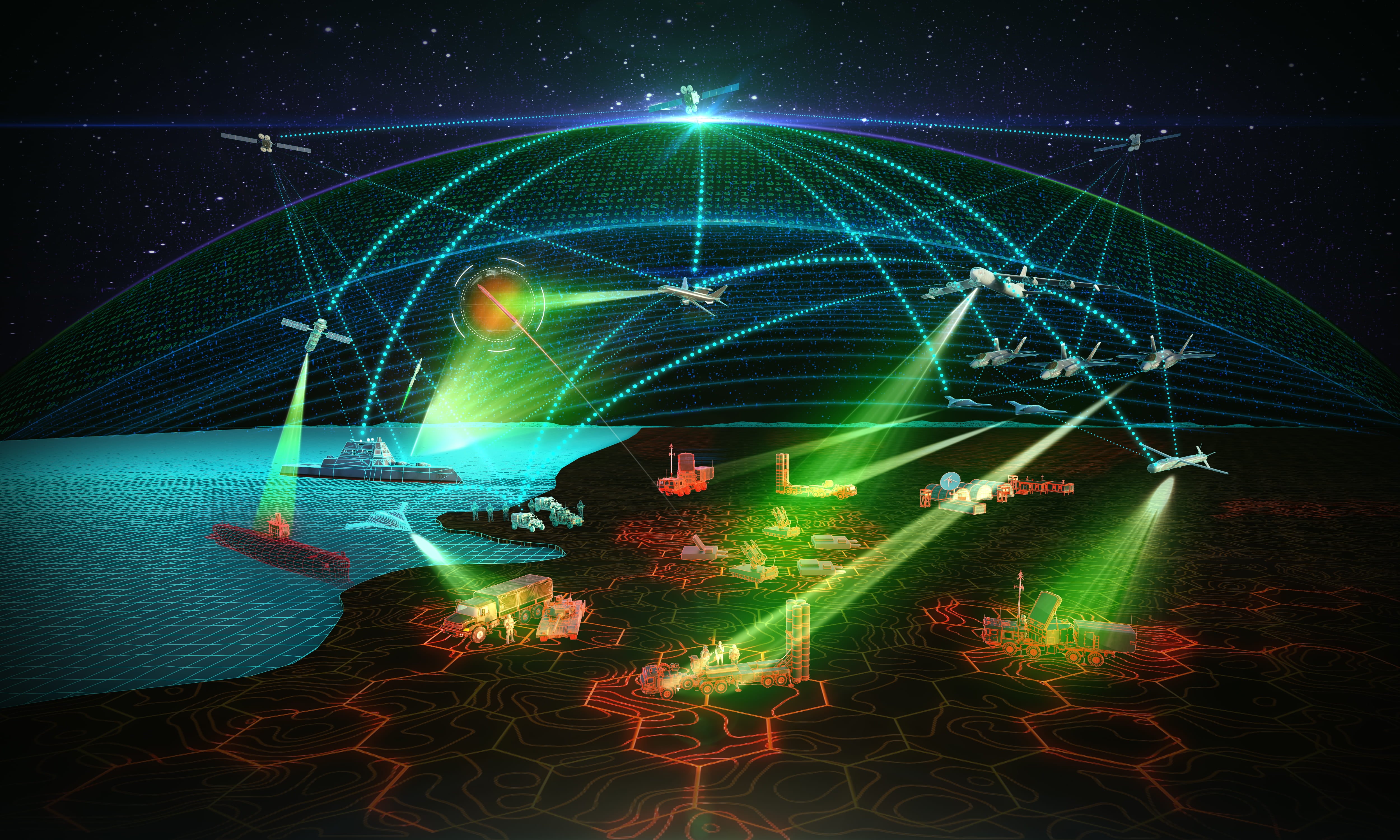Defense is the ultimate collective effort. That’s true within the U.S. military across branches, agencies and echelons, but it’s also increasingly true of working with our allies across the globe.
The conflicts of the 21st century require unprecedented global coordination as threats operate across geographies, borders, and digital platforms - incurring a geo-political complexity that grows with every micro-conflict. At this year’s AFA Conference, Admiral Grady, Vice Chairman of the Joint Chiefs of Staff Adm., echoed this urgency when discussing the latest release of the Joint Warfighting Doctrine: “U.S. military forces must ‘sense and make sense’ of their operating environments by fusing information from sensors across multiple domains — including space, air, and land — and make that information rapidly available for decision-makers.”
To be successful in future peer-to-peer warfare, we need to quickly recognize and appreciate that the “decision-makers” the Admiral was referring to are really within all potential permutations of allies and partners. If we aren’t building core command and control (C2) capabilities with this in mind now, we will lose when approached by a real threat.
The multinational nature of that reference is an aspect that often gets minimized in the planning and execution of Combined Joint All-Domain Command and Control experimentation. Decision advantage comes down to information superiority, which is why CJADC2 is so critical—but currently, too much focus is placed on data analysis rather than collaboration.
Emerging technologies like artificial intelligence (AI) and machine learning hold incredible promise for extracting mission insights, but for those insights to be operationalized we have to focus on a simple concept that’s incredibly difficult: seamless workflow interoperability. From planning to approvals to intelligence sharing to deconfliction - across different nations, branches, roles, and functions - this is an incredibly complex task, and it holds the largest opportunity in terms of accelerating mission agility and, therefore, actual deterrence. There are three primary pillars to realize this new world of global alignment:
Multinational connectivity
Global collaboration and deconfliction are indispensable components of integrated deterrence. We are operating in an age where whole-of-government challenges from near-peer adversaries, asymmetric warfare from countless state and non-state actors, constant dis- and misinformation, and cyber terrorism coexist to create the most fluid and complex threat environment the U.S. and its allies have ever seen. If we can prove to our challengers that if we go to war, any coalition we form will be immediately and consistently interoperable across stakeholders, even an overly confident peer would think twice.
But the reality is that coordination across allies in multinational operations is still too onerous, even in exercises and experimentation. When a coalition operation requires thousands of phone calls and emails over a few days to plan, approve, and execute, the inefficiency becomes clear. The good news is that the biggest barriers aren’t technical - they are cultural and policy-oriented. To boot, the DoD continues to prioritize investment in expensive data visualization solutions that fail to address the foundational workflow and interoperability challenges that impede progress in producing real deterrence.
A few current and upcoming initiatives drive advances toward multinational interoperability, such as the Army’s Project Convergence Capstone and INDOPACOM’s new Joint Mission Accelerator Directorate (JMAD). These efforts focus on building foundational, data-centric processes, technical innovation, and collaboration with allies and partners now, so we’re not scrambling once a crisis begins.
These efforts underscore the importance of ally-partner coordination and a recognition of how a coalition can rapidly change as conflict increases in intensity. They’re paving the way for data-centric workflows (in data-centric capabilities) that improve efficiency and coordination, ultimately driving organizations to better execute coalition C2. These initiatives are often overshadowed by innovation theater and nepotistic commercial capability selection; ironically, they solve our core coalition challenges in “boring ways” that will change the world.
Integrated workflows
The reality is that all C2 missions require similar capabilities and workflows. On average, 70-80 percent of C2 functions are the same - from planning to execution to approval and assessment., regardless of country or function. Every operation requires domain-specific stakeholders and data sets at various classification levels, but the workflows are well established. The challenge is that departments, branches, and countries procure and build their own siloed C2 systems, and when it’s time for joint operations, these systems don’t integrate well. They may share data, but they don’t truly interoperate.
There is an opportunity to leverage existing rules and role-based systems with automated workflows that only need to be tweaked for specific missions rather than built from scratch. The doctrinal and documented steps of military planning, approval, execution, and assessment are all inherently role-based - and are guided by rules - capitalizing on this in technology can empower personnel to focus on strategic thinking or decision-making rather than connecting disparate processes manually.
To truly collaborate across departments, branches, and allies, stakeholders must operate off of the same accurate information. The challenge within many joint operations is that each organization makes decisions based on its narrow view of the intelligence landscape and then shares that data with coalition partners using static assets like slide decks.
The way forward is bringing partners and allies together within the same data-centric environment to empower teams to understand, collaborate, and act on authoritative and publicly available data in unison. We must move towards an ongoing posture of integrating U.S. military, adversary, partner, and ally data within a centralized framework that updates in real-time alongside political and economic world events. Through this framework, teams benefit from increased security, seamless data sharing, and improved cooperation among coalition partners.
Nick Woodruff is Research Innovations Incorporated’s Chief Strategy Officer, charged with the development of partnerships, both domestic and internationally, in pursuit of global impact.








